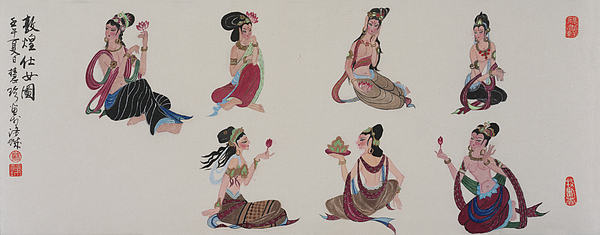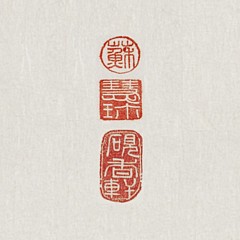Meet Jenny Sanders! At Old Town Artisan Studios in La Quinta, CA Thursday October 21 from 5-7pm!


Boundary: Bleed area may not be visible.


by Jenny Sanders
$23.50
Size
Image Size
Product Details
Purchase a tote bag featuring the painting "The Court Ladies of Dunhuang" by Jenny Sanders. Our tote bags are made from soft, durable, poly-poplin fabric and include a 1" black strap for easy carrying on your shoulder. All seams are double-stitched for added durability. Each tote bag is machine-washable in cold water and is printed on both sides using the same image.
Design Details
Dunhuang, in Gansu Province, was a major gateway to the west, an important commercial hub along the Asian-European caravan route known as The Silk... more
Ships Within
2 - 3 business days

Painting

Canvas Print

Framed Print

Art Print

Poster

Metal Print

Acrylic Print

Wood Print

Greeting Card

iPhone Case

Throw Pillow

Duvet Cover

Shower Curtain

Tote Bag

Round Beach Towel

Zip Pouch

Beach Towel

Weekender Tote Bag

Portable Battery Charger

Bath Towel

Apparel

Coffee Mug

Yoga Mat

Spiral Notebook

Fleece Blanket

Tapestry
Dunhuang, in Gansu Province, was a major gateway to the west, an important commercial hub along the Asian-European caravan route known as The Silk Road, and an important religious center for many religions, particularly Buddhism. When easier and less-dangerous modes of east-west travel opened, Dunhuang faded into relative obscurity. Hundreds of caves and grottoes had been built in the area over the years. The most skilled Buddhist artists and artisans were employed to create mural paintings on the cave walls of the Thousand Buddhas. Many of the murals in Dunhuang were painted by the great masters of the Tang Dynasty (618-907), a peak period for Chinese art and Buddhism.This treasure trove of Buddhist art located in this remote and formidable area in northwest China had lain forgotten, when in 1940, Zhang Daquian (1899-1983), the maestro of traditional Chinese ink brush painting found his way to Dunhuang. He began copying murals at the Magao and Yulin Caves and grottoes. The motif of t...

Jenny Sanders (Huizhen Su) Jenny Sanders was born Huizhen Su in Nanking, China in 1946, a tumultuous period in Chinese history. Her father was a pilot with the forces of Chiang Kai-shek during World War Two. Her parents met when he made an emergency landing in her mothers village and they married in 1943. Jenny is the oldest daughter of six children. The family escaped to Taiwan in 1947 at the beginning of the Chinese communist revolution as there was great danger in China for the military officers and their families who supported Chiang Kai-shek. The family settled in Taiwan, and Jenny began her first art lessons in kindergarten. She continued to study art throughout her school years. She then attended college and studied...
$23.50


Jenny Sanders
Dunhuang, in Gansu Province, was a major gateway to the west, an important commercial hub along the Asian-European caravan route known as The Silk Road, and an important religious center for many religions, particularly Buddhism. When easier and less-dangerous modes of east-west travel opened, Dunhuang faded into relative obscurity. Hundreds of caves and grottoes had been built in the area over the years. The most skilled Buddhist artists and artisans were employed to create mural paintings on the cave walls of the Thousand Buddhas. Many of the murals in Dunhuang were painted by the great masters of the Tang Dynasty (618-907), a peak period for Chinese art and Buddhism.This treasure trove of Buddhist art located in this remote and formidable area in northwest China had lain forgotten, when in 1940, Zhang Daquian (1899-1983), the maestro of traditional Chinese ink brush painting found his way to Dunhuang. He began copying murals at the Magao and Yulin Caves and grottoes. The motif of the court ladies is a recurring theme. Zhang embraced the style he found painted on the walls of the caves in the healthy and vigorous beauty of the female Buddhist believers and fairies depicted in the murals. Zhang’s court ladies no longer appeared pale and sickly as they were portrayed during the Ming and Quan dynasties when female curves and frail, anemic gestures were highlighted. The figures here took on a dimension of grace and dignity. Many of the ladies depicted in the murals were members of powerful and noble families who had the financial resources to sponsor the construction of the caves and the skilled Buddhist artists. These lovely ladies can give the viewer a small idea of the charm portrayed in the murals of Dunhuang.